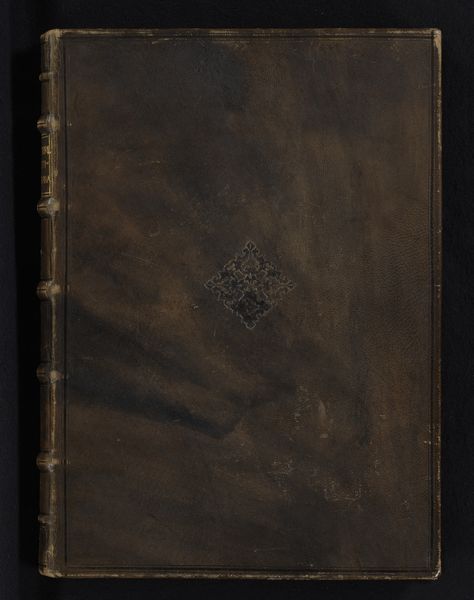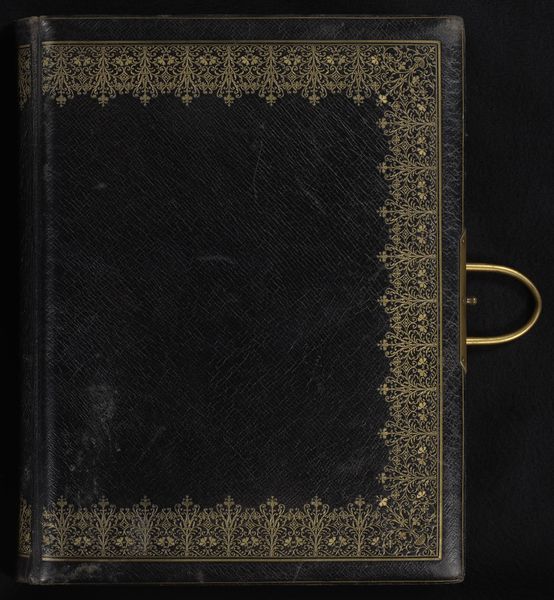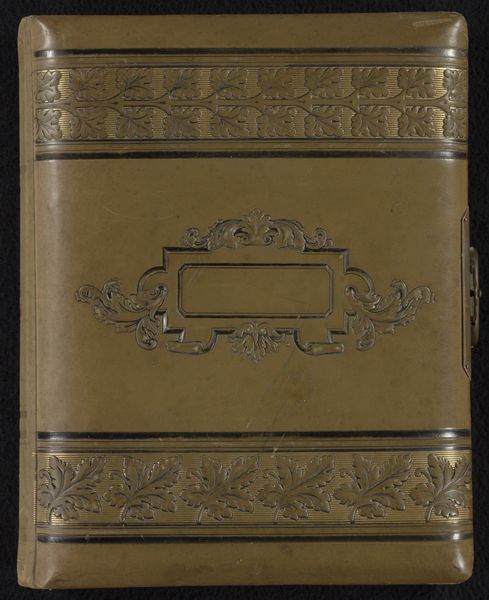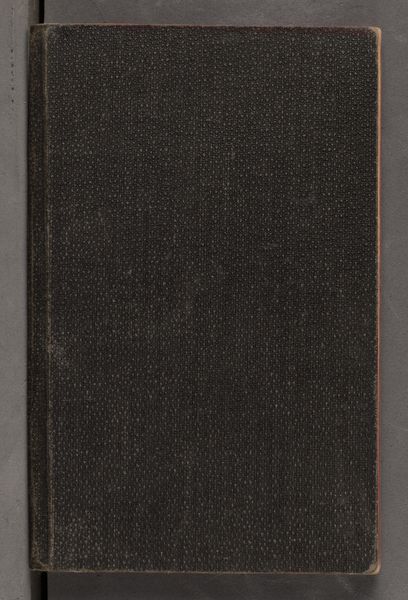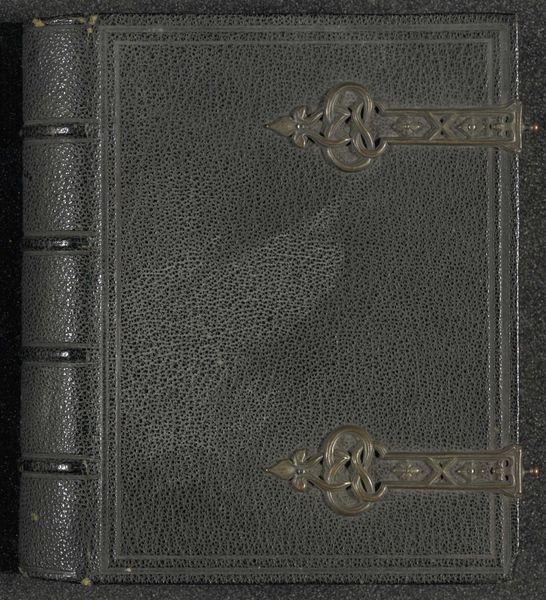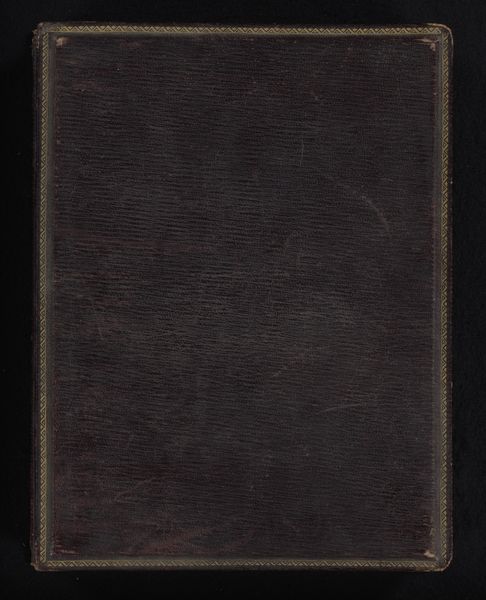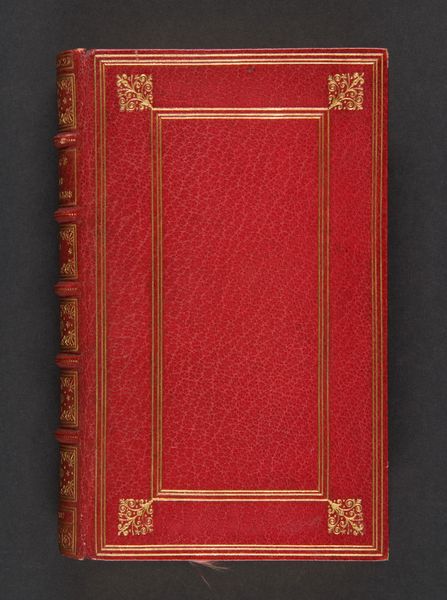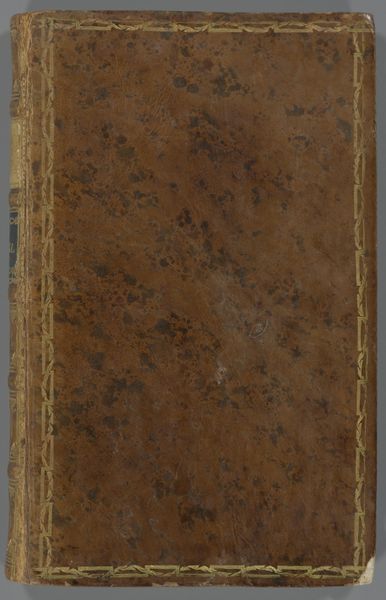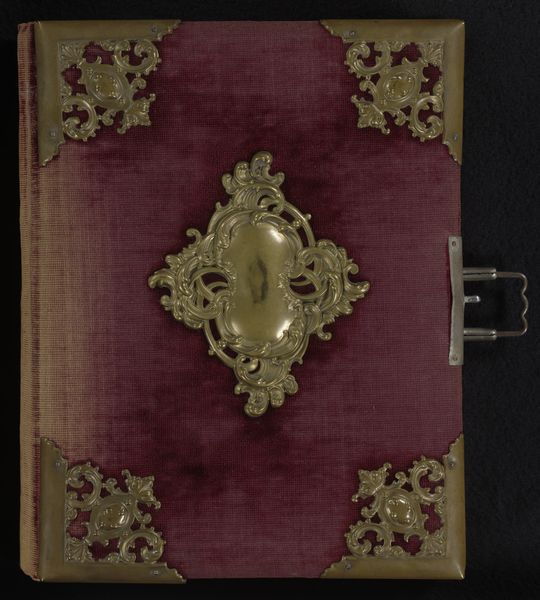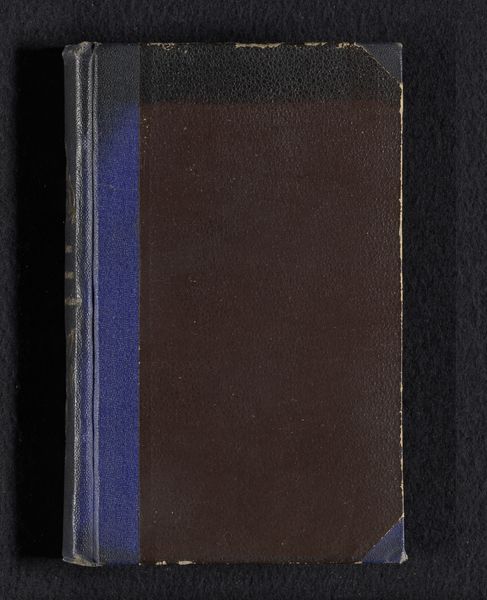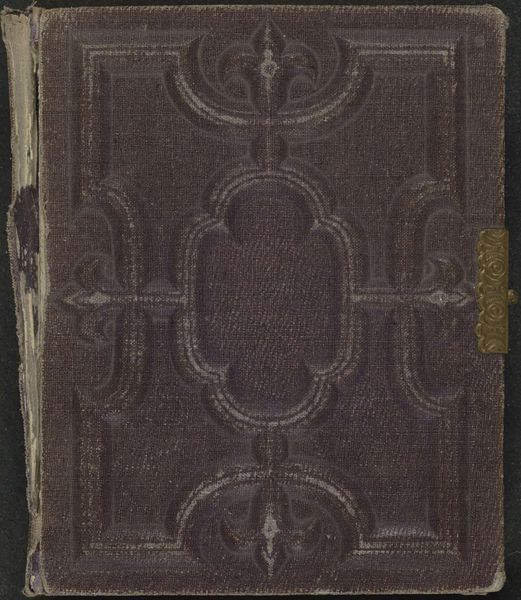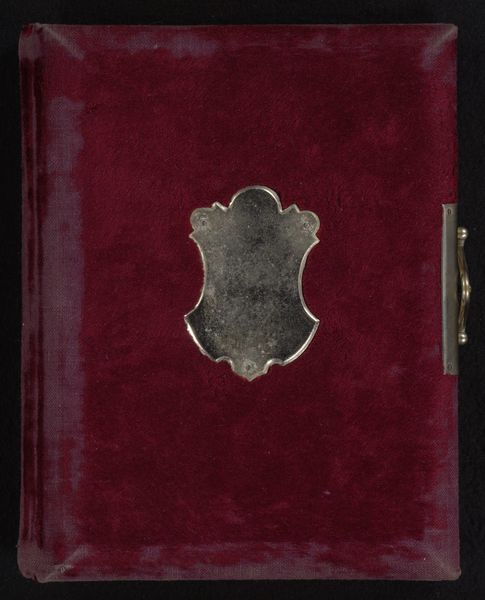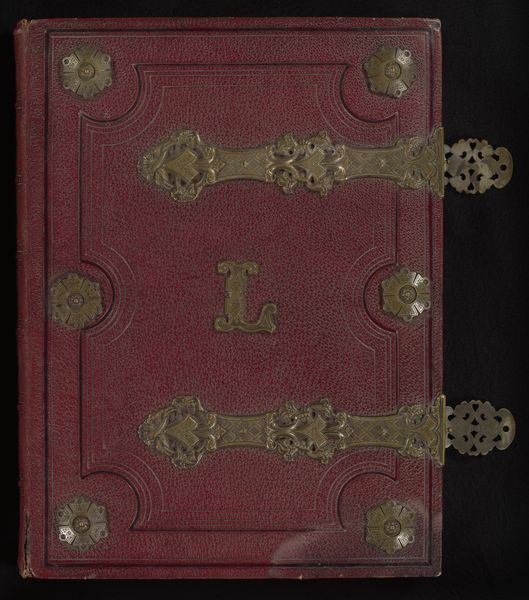
Fotoalbum met 29 foto's van Nederlandse vorsten c. 1860 - 1890
0:00
0:00
mixed-media, textile, paper, photography, albumen-print
#
portrait
#
mixed-media
#
book
#
textile
#
paper
#
photography
#
decorative-art
#
albumen-print
Dimensions: height 152 mm, width 155 mm, width 128 mm, thickness 35 mm
Copyright: Rijks Museum: Open Domain
Editor: We're looking at a photo album, titled "Fotoalbum met 29 foto's van Nederlandse vorsten," made around 1860 to 1890 by various makers. It combines photography, textile, and paper elements. The cover, with its dark green and decorative metal clasps, feels very formal and closed off. What do you see in this object? Curator: This album is a fascinating vessel of cultural memory. The very act of compiling photographs of Dutch monarchs into a bound album suggests a desire to codify and preserve a certain image of power and lineage. The dark green, the ornate clasps – they’re not just decorative. They speak of solemnity, of an attempt to imbue these leaders with a sense of timeless authority. Do you see any specific repeated shapes? Editor: Yes, now that you mention it, there are floral and leaf patterns embossed in the green cover under the metal elements and diamond shapes are on the clasps, suggesting wealth and status. But beyond that, why collect photographs in an album? What did it signify back then? Curator: Consider this: photography was still a relatively new medium. To assemble photographic portraits of rulers was a way of solidifying their image, controlling their representation. Think of each portrait not just as an image, but as a symbolic affirmation of dynastic power. Furthermore, consider the tactile nature of an album – it’s meant to be held, handled, shared, isn't it? It invites a more intimate engagement with these figures than, say, a public statue. Editor: So, the album format creates a controlled, curated intimacy. Almost like a PR campaign bound in leather and metal. I see the importance of visual rhetoric now, especially how this format invites touch, underscoring cultural and historical values and beliefs. Curator: Exactly. It highlights a particular cultural craving of that era: for order, legacy and the controlled dissemination of images, loaded with symbolic intent.
Comments
No comments
Be the first to comment and join the conversation on the ultimate creative platform.

